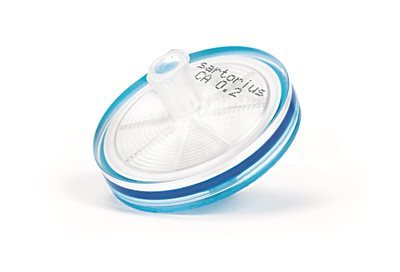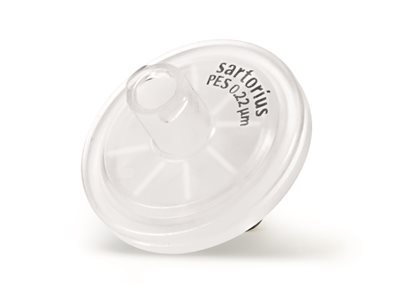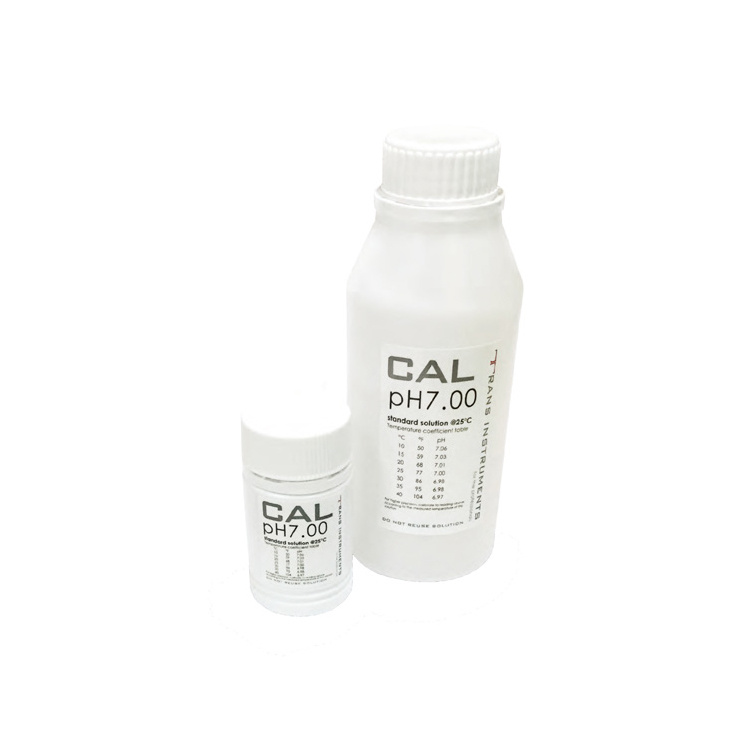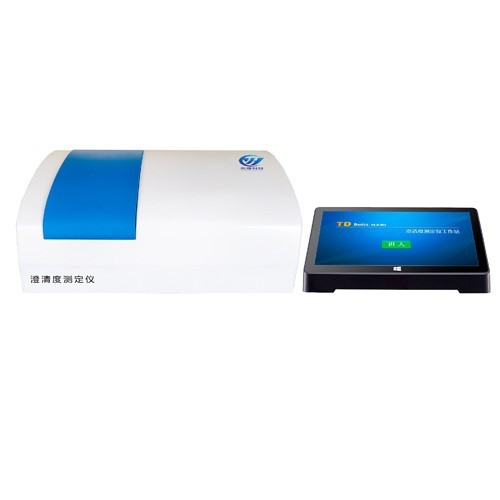中/美/欧/日四大药典溶液颜色检查规范 --参考与比较
中/美/欧/日四大药典澄清度检查规范-中英双译中国药典20200902澄清度检查法澄清度检查法系将药品溶液与规定的浊度标准液相比较,用以检查溶液的澄清度。除另有规定外,应采用第一法进行检测。品种项下规定的“澄清”,系指供试品溶液的澄清度与所用溶剂相同,或不超过0.5号浊度标准。“几乎澄清”,系指供试品溶液的浊度介于0.5号至1号浊度标准液的浊度之间。第一法(目视法)除另有规定外,按各品种项下规定的浓度要求,在室温条件下将用水稀释至一定浓度的供试品溶液与等量的浊度标准液分别置于配对的比浊用玻璃管(内径15-16mm,平底,具塞,以无色、透明、中性硬质玻璃制成)中,在浊度标准液制备5分钟后,在暗室内垂直置于伞棚灯下,照度为1000lx,从水平方向观察、比较。除另有规定外外,供试品溶解后应立即检视。第一法无法准确判定两者的澄清度差异时,改用第二法进行测定,并以其测定结果进行判定。浊度标准存贮液的制备称取于105℃干燥至恒重的硫酸肼1.00g,置于100ml量瓶中,加水适量使溶解,必要时可在40℃的水浴中温热溶解,并用水稀释至刻度,摇匀,放置4-6小时;取此溶液于等容量的10%乌洛托品溶液混合,摇匀,于25℃避光静置24小时,即得。该溶液置冷处避光保存,可在2个月内使用,用前摇匀。浊度标准原液的制备取浊度标准贮备液15.0ml,置1000ml量瓶中,加水稀释至刻度,摇匀,取适量,置1cm吸收池中,照紫外-可见分光光度法(通则0401),在550nm的波长处测定,其吸光度在0.12-0.15范围内,该溶液应在48小时内使用,用前摇匀。浊度标准液制备取浊度标准原液与水,按照下表配置,即得。浊度标准液应临用时制备,使用前充分摇匀。第二法(浊度仪法)供试品的浊度可采用浊度仪测定。溶液中不同大小、不同特性的微粒物质包括有色物质均可使入射光产生散射,通过测定透射光或者散射光的强度,可以检查供试品的浊度。仪器测定模式通常有三种类型,透射光式、散射光式和透射光-散射光比较测量模式(比率浊度模式)。1.仪器的一般要求采用散射光式浊度仪时,光源峰值波长为860nm;测量范围应包含0.01-100ntu。在0-10ntu范围内分辨率应为0.01ntu;在10-100ntu范围内分辨率应为0.1ntu.2.适用范围及检测原理本法采用散射光式浊度仪,适用于低、中浊度无色供试品溶液的浊度测定(浊度值为100ntu以下的供试品。)因为高浊度的供试品会造成多次散射现象,时散射光强度迅速下降,导致散射光强度不能正确反映供试品的浊度值。0.5-4号浊度标准液的浊度值范围约为0-40ntu。采用散射光式浊度仪测定时,入射光和测定的散射光呈90℃夹角,入射光强度和散射光强度关系式如下。i=k’ti0式中i为散射光强度,单位为cd;i0为入射光强度,单位为cd;k’为散射系数;t为供试品溶液的浊度值,单位为ntu(ntu是基于福尔马肼浊度标准液液测定的散射浊度单位,福尔马肼浊度标准液即为第一法中的浊度标准贮备液)。在入射光i0不变的情况下,散射光强度i与浊度值成正比。因此,可以将浊度测量转化为散射光强度的测量。3.系统的适用性试验仪器应定期(一般每月一次)对浊度标准液的线性和重复性进行考察,采用0.5号至4号浊度标准液进行浊度值测定,浊度标准液的测定解果(单位ntu)与浓度间应呈线性关系,线性方程的相关系数应不低于0.999;取0.5号至4号浊度标准液,重复测定5次,0.5号和1号浊度标准液测量浊度值的相对标准偏差应不大于5%,2-4号浊度标准液测量浊度值的相对标准偏差不大于2%。4.测定法按照仪器说明书要求并采用规定的浊度液进行仪器校正。溶液剂直接取样测定;原料药或者其它剂型按照个论项下的标准规定制备供试品溶液,临用时制备。分别取供试品溶液和相应浊度标准液进行测定,测定前应摇匀,并避免产生气泡,读取浊度值。供试品溶液浊度值不得大于相应浊度标准液的浊度值。美国药典usp44visualcomparison视觉比较thepurposeofthistestistoprovidethedetailsforthevisualcomparisonofthecolorand/orturbidanceofsamplesolutionsofcertainconcentrationtoastandardsolutionoraseriesofstandardsolutionsofknownconcentration.whereacolororturbiditycomparisonisdirected,followtheproceduresandconditionsoutlinedbelowforperformingthesetests.本试验的目的是提供特定浓度的样品溶液与已知浓度的标准溶液或一系列标准溶液的颜色和/或浊度的视觉比较细节。如果需要进行颜色或浊度比较,请遵循以下程序和条件进行这些测试comparisonvessels:color-comparisontubesmatchedascloselyaspossibleininternaldiameter,indepthofsamplesolution,andinallotherrespectsshouldbeused.对比容器:应使用内径、样品溶液深度和所有其他方面尽可能匹配的颜色对比管。viewingconditionsforturbiditycomparison:tubesshouldbeviewedhorizontallyagainstadarkbackgroundwiththeaidofalightsourcedirectedfromthesidesofthetubes.浊度比较的观察条件:应在黑暗背景下,借助从管子侧面发出的光源水平观察管子。viewingconditionsforcolorcomparison:tubesshouldbevieweddownwardagainstawhitebackground.mostofthetime,commonroomlightingissufficienttoperformtheassessment.alightsourcedirectedfrombeneaththebottomsofthetubesmaybeusedifneededandifthepracticeisconsistentbetweenthematerialsundercomparison.颜色比较的观察条件:管子应在白色背景下向下观察。大多数情况下,公共空间照明足以进行评估。如果需要,并且对比材料之间的实践一致,可以使用从管底部下方引导的光源nephelometryandturbidimetry散射光浊度法和透射光比浊法1.introduction介绍nephelometryandturbidimetryareanalyticaltechniquesthatarebasedontheprinciplesoflight-scatteringphenomena.lightscatteringisthephysicalphenomenoninwhichabeamoflightchangesitsdirectionofpropagation(knownasdeflection)asaresultofinteractionwithsufficientlysmallmatterparticles.ithasbeenestablishedfromthemaxwellelectromagnetictheorythataprerequisiteforscatteringtooccuristhattherefractiveindexesofthesuspendedparticlesmustbedifferentfromthoseofthesuspendingliquid.thelargerthedifference,themoreintensethescatteringbecomes.therearetwotypesoflightscattering:1)elasticscattering,inwhichthewavelengthofthescatteredlightandincidentlightarethesame and2)inelasticlightscattering,inwhichthewavelengthofthescatteredlightandincidentlightaredifferent.onlythefirsttypeoflightscattering(elastic)isrelevanttonephelometryandturbidimetry.散射光浊度法和透射光比浊法是基于光散射现象原理的分析技术。光散射是一种物理现象,其中光束由于与足够小的物质粒子相互作用而改变其传播方向(称为偏转)。根据麦克斯韦电磁理论,散射发生的先决条件是悬浮颗粒的折射率必须不同于悬浮液体的折射率。差异越大,散射越强烈。光散射有两种类型:1)弹性散射,其中散射光和入射光的波长相同;2)非弹性光散射,其中散射光和入射光的波长不同。只有前一种光散射(弹性)与散射光浊度法和透射光比浊法有关。inturbidimetry,theintensityofthetransmittedlightismeasuredandtheattenuationoftheintensityofincidentlightasaresultofscatteringismeasuredatthedirectionofincidentlight(i.e.,0°)andcomparedtotheintensityofincidentlight(blankmeasurement).themeasuredpropertyisanindirectmeasurementofthescatteringeffectofthesuspendedparticlesandisreferredtoasturbidance.anyabsorbanceoflightbythesuspendedsamplewillresultinadditionalattenuationoflightintensity(seeultraviolet-visiblespectroscopyandultraviolet-visiblespectroscopy—theoryandpractice).hence,itisimportanttoensurethatthematerialbeingmeasureddoesnotabsorblightatthemeasurementwavelength.indeedtheequationsgoverningabsorptionandturbidimetryarethesame(albeitwithdifferentvaluesfortheattenuationconstants).innephelometrictechniques,theintensityofthescatteredlightata90°anglefromthepropagationdirectionoftheincidentlightismeasured.therefore,anephelometricmeasurementisadirectmeasurementofthescatteringeffectofsuspendedmatter.在透射光比浊法中,测量透射光的强度,并在入射光方向(即0°)测量散射导致的入射光强度的衰减,并与入射光强度进行比较(空白测量)。被测特性是悬浮颗粒散射效应的间接测量,称为浊度。悬浮样品对光的任何吸收都会导致光强度的额外衰减(参见ultraviolet-visiblespectroscopy和ultraviolet-visiblespectroscopy—theoryandpractice)。因此,确保被测材料不会吸收测量波长处的光非常重要。实际上,控制吸收和浊度测定的方程式是相同的(尽管衰减常数的值不同)。在散射光浊度法中,测量与入射光传播方向成90°角的散射光强度。因此,散射光浊度法浊度测量是对悬浮物散射效应的直接测量。2.termsanddefinitions术语和定义termscommonlyusedindescribingturbidimetricandnephelometrictechniquesare:• turbidance(symbol,s):ameasureofthedecreaseofthetransmittedincidentlightbeamintensityasaresultofthelight-scatteringeffectofsuspendedparticles.theamountofsuspendedmattermaybemeasuredbyobservationofeitherthetransmittedlight(turbidimetry)orthescatteredlight(nephelometry).logi0/it=kbc=ti0=intensityofincidentlightit=intensityoftransmittedlightk=molarturbiditycoefficientb=cellpathlengthc=concentrationt=turbidance• turbidity(symbol,τ):inturbidimetricmeasurements,theturbidityisthemeasureofthedecreaseinincidentbeamintensity/unitlengthofagivensuspension.theinternationalorganizationforstandardizationdefinesturbidityas“thereductionoftransparencyofaliquidcausedbythepresenceofundissolvedmatter”.• turbiditymeasurementunits:theturbidityunitsarestatedusingadescriptorwhichindicatesthemethodofmeasurement.• nephelometricturbidityunits(ntus):whentheturbidityismeasuredusinganephelometer,whichmeasuresthescatteredlightata90°anglefromthedirectionofpropagationofincidentlight,theunitsofturbidityarecallednephelometricturbidityunits(ntus).themagnitudeofntuisdefinedbasedontheturbiditygeneratedbyprimaryformazinstandard(asuspensionmadebymixingsolutionsofhydrazinesulfateandhexamethylenetetramineinwater).saferpolymer-beadsuspensionsarenowcommerciallyavailableandarerecognizedasanacceptablealternative.however,allthosestandardsaretracedtoformazin.theprimaryformazinstandardsolutionhasbeenassignedaturbidityof4000ntus.otherrecognizedunitsforturbidityincludetheformazinturbidityunit(ftu)andtheformazinnephelometricunit(fnu).theseunitsareequivalenttontufortherangefrom0–40ntus.描述浊度法和浊度法的常用术语包括:• 浊度(符号s):由于悬浮颗粒的光散射效应,透射入射光束强度降低的一种度量。悬浮物的量可以通过观察透射光(比浊法)或散射光(浊度法)来测量。logi0/it=kbc=ti0=入射光强度it=透射光强度k=摩尔浊度系数b=样品池路径长度c=浓度t=浊度• 浊度(符号,τ):在透射光浊度测量中,浊度是给定悬浮液的入射光束强度/单位长度减少的量度。国际标准化组织将浊度定义为“由于存在未溶解物质而导致液体透明度降低”。• 浊度测量单位:浑浊度单位用一个描述符表示,该描述符指示测量方法。• 散射光浊度计浊度单位(ntu):当使用散射光浊度法测量浊度时,浊度计以与入射光传播方向成90°角的角度测量散射光,浊度单位称为散射光浊度法浊度单位(ntu)。ntu的大小是根据初级福尔马肼标准品(一种将硫酸肼和六亚甲基四胺溶液混合在水中制成的悬浮液)产生的浊度定义的。更安全的聚合物微珠悬浮液现已上市,并被公认为可接受的替代品。然而,所有这些标准都可以追溯到福尔马肼。初级福尔马肼标准溶液的浊度为4000ntu。其他公认的浊度单位包括福尔马肼比浊法单位(ftu)和福尔马肼浊度法单位(fnu)。这些单位相当于0-40ntu范围内的ntu。3.applications应用turbidimetricandnephelometrictechniqueshaveapplicationsthatinclude1)concentrationdeterminationofsolutionsand/orsuspensions(determinationofseveralcationsandanionsbyprecipitatingandsuspendingtheresultingprecipitateatwell-controlledreactionparameters) 2)measurementofthedegreeofturbidityofturbidsolutionsorsuspensions 3)determinationofweight-averagemolecularweightsanddimensionsofpolydispersesystemsinthemolecularweightrangefrom1000toseveralhundredmillion 4)measurementofimmunoassays’reactionkineticsorkineticsofimmunoprecipitations(ratenephelometry) 5)monitoringofcellandbacteriagrowth and6)particlesizedistributiondeterminationofsuspendedmaterial,particlecounting,etc.透射光比浊法和散射光浊度法技术的应用包括1)溶液和/或悬浮液的浓度测定(通过在控制良好的反应参数下沉淀和悬浮产生的沉淀物,来测定几种阳离子和阴离子);2)测量混浊溶液或悬浮液的浊度;3)测定分子量在1000到数亿之间的多分散体系的重均分子量和尺寸;4)测量免疫分析的反应动力学或免疫沉淀动力学(比率散射浊度法);5)监测细胞和细菌的生长;6)悬浮物粒度分布测定、颗粒计数等。ratenephelometryiswidelyusedforvaccinecomponentsassaysand/orquantitationofcomponentsinbloodserum.itisalsousedforhostcellproteinqualificationinrecombinantbiopharmaceuticals.whenusingthetechnique,themeasurementofthechangeinthelight-scatteringresponsebyantigen–antiserumorantigen-purifiedantibodycomplexesisusedtocalculatetheamountofantigen(ag)orantibody(ab)responsiblefortheimmunologicalab-agprecipitationreactionoragglutinationreaction.oftentheantigensunderconsiderationarelinkedcovalentlyoradsorbedtopolymericmicrospherestoincreasethescatteringefficiency theresultingtechniqueisknownas"particle-enhancedimmunoassay".althoughthetechniqueisdescribedasnephelometry,usuallybothscatteredandtransmittedlightaremeasuredusingtheratioinstruments.比率散射浊度法广泛用于疫苗成分分析和/或血清成分的定量。它还用于重组生物制药中的宿主细胞蛋白质鉴定。当使用该技术时,通过测量抗原-抗血清或抗原纯化抗体复合物的光散射反应的变化,来计算导致免疫抗体-抗原沉淀反应或凝集反应的抗原(ag)或抗体(ab)的量。通常考虑抗原共价连接或吸附在聚合物微球上,以提高散射效率;由此产生的技术被称为“颗粒增强免疫分析”。虽然这项技术被称为散射光浊度法,但通常散射光和透射光都是用比率仪器测量的。nephelometricmeasurementsaremorereliableinlowturbidityranges(relativelylowconcentrationofthescatteringmedium).inthisrange,alinearrelationshipisobservedbetweenthesampleconcentrationandthedetector’ssignalintensityexpressedasntu.astheconcentrationincreases,sodoestheincidenceofmultiplescatteringthatdeviatestheresponsefromthelinearity.themaximumntuvalue,whichsupportsareliablelinearityrelationship,isintherangeof1750–2000ntus.turbidimetryispreferredforhigherturbidityranges(concentrationsofthescatteringmedia).toachieveconsistentresults,allmeasurementvariablesmustbecarefullycontrolled.wheresuchcontrolispossible,extremelydilutesuspensionsmaybemeasured.散射光法浊度测量在低浊度范围(散射介质浓度相对较低)更可靠。在该范围内,观察到样品浓度与检测器信号强度(以ntu表示)之间存在线性关系。随着浓度的增加,多次散射的入射角也会增加,从而偏离线性响应。支持可靠线性关系的最大ntu值在1750–2000ntu范围内。透射光比浊法适用于更高的浊度范围(散射介质的浓度)。为了获得一致的结果,必须仔细控制所有测量变量。在可能的情况下,可以测量极稀的悬浮液。4.instrumentation仪器仪表instrumentsusedforturbidimetricandnephelometricmeasurementsarecalledturbidimetersandnephelometers,respectively.generally,theseinstrumentsconsistofamercurylampwithfiltersforthestronggreenorbluelines,ashutter,asetofneutralfilterswithknowntransmittance,andasensitivephotomultiplier,whichcanbemountedfixedat0°orata90°anglefromtheincidentlightpropagationdirection,oronanarmthatcanberotatedaroundthesolutioncellandsetatanyanglefrom−135°to0°to+135°byadialoutsideofthelight-tighthousing.solutioncellsareofvariousshapes,suchassquareformeasuring90°scattering semioctagonalfor45°,90°,and135°scattering andcylindricalforscatteringatallangles(seefigure1).用于透射光比浊法和散射光浊度法测量的仪器分别称为透射光浊度计和散射光浊度计。通常,这些仪器包括一个带有滤光器的汞灯(用于强绿线或蓝线)、一个快门、一组具有已知透射率的中性滤光器和一个灵敏的光电倍增管,该光电倍增管可安装在与入射光传播方向成0°或90°角的位置,或者在一个臂上,它可以围绕溶液单元旋转,并通过不透光外壳外的表盘设置为−135°到0°到+135°的任何角度。溶液池的形状多种多样,例如用于测量90°散射的正方形;45°、90°和135°散射为半八角形;圆柱形可适用于所有角度的散射(见图1)。figure1.representativenephelometric(turbidimetric)instrument.notethatdetector2maybemountedonamovablearm.图1。代表性浊度仪。注意,探测器2可安装在可移动臂上。turbidityalsocanbemeasuredwithastandardphotoelectricfilterphotometerorspectrophotometer,preferablywithilluminationintheblueportionofthespectrum.nephelometricmeasurementsrequireaninstrumentwithaphotocellplacedsoastoreceivescattered,ratherthantransmitted,light.becausethisisthesamegeometryusedinfluorometers,theycanbeusedasnephelometersbyproperselectionoffilters.aratioturbidimetercombinesthetechnologyof90°nephelometryandturbidimetry.itcontainsphotocellsthatreceiveandmeasurescatteredlightata90°anglefromthesampleaswellasreceivingandmeasuringtheforwardscatterinfrontofthesample.italsomeasureslighttransmitteddirectlythroughthesample.linearityisattainedbycalculatingtheratioofthe90°anglescatteredlightmeasurementtothesumoftheforwardscatteredlightmeasurementandthetransmittedlightmeasurement.thebenefitofusingaratioturbidimetricsystemisthatthemeasurementofstraylightbecomesnegligible.inaddition,thedeterminationofturbidityofcoloredsuspensionsisdoneexclusivelyusingturbidimetricornephelometricinstrumentswithratiomodebecausethisprocedurecompensatesfortheattenuationoflightastheresultofthesuspensioncolor.typically,thelightsourceintheseinstrumentsisatungstenlampwithmostofthelightintensityatabout550nmoperatingatthefilamenttemperatureof2700k.othersuitablelightsourcesarealsoavailable.typically,thedetectorsare▲silicondiodes▲(err1-may-2019)andphotomultipliers.analternativeforeliminatingthecoloreffectinvolvesusinganinfraredlight-emittingdiodeasalightsource,whichyieldsanemissionmaximumcenteredatabout860nmandaspectralbandwidthof60nm.whenlaserlightsourcesarealsoused,especiallyinnephelometricinstruments,thetechniqueiscommonlyknownas"lasernephelometry".theadvantageofusinglasernephelometersisthesignificantimprovementinsignal-to-noiseratioatverylowdetectionlevels.usuallythelightsourceisalaserdiodewithaworkingwavelengthat660nm.thehigh-powerdensityofthelaserbeamgivesrisetohigherscatteredintensityfromsmallerparticles.combinedwithalighttrap,whichabsorbstheunscatteredlight,thesystemlowersthestraylightsignificantly.whentheuseofanephelometerorturbidimeterisindicatedforaprocedureinamonograph,instrumentsworkinginratiomodemaybeusedinstead.浊度也可以用标准光电滤光光度计或分光光度计测量,最好是在光谱的蓝色部分进行照明。散射光浊度法测量需要一个装有光电管的仪器,以便接收散射光,而不是透射光。由于这与荧光计中使用的几何结构相同,因此可通过适当选择滤光片将其用作浊度计。比率浊度计结合了90°散射光浊度法和透射光比浊法。它包含光电管,接收和测量与样品成90°角的散射光,以及接收和测量样品前面的前向散射光。它还测量直接穿过样品的光。通过90°角散射光测量值,前向散射光测量值和透射光测量值之和,计算两者的比值,可获得线性度。使用比率浊度测量系统的好处是杂散光的测量变得可以忽略不计。此外,彩色悬浮液的浊度测定仅使用透射光比浊法浊度仪或浊度仪(带比率模式)进行,因为该程序补偿了悬浮液颜色导致的光衰减。通常,这些仪器中的光源是钨灯,在2700k的灯丝温度下工作,大部分光强约为550nm。也可使用其他合适的光源。通常,探测器是▲硅二极管▲和光电倍增管。另一种消除颜色效应的方法是使用红外发光二极管作为光源,其最大发射中心约为860nm,光谱带宽为60nm。当激光光源也被使用时,尤其是在浊度测量仪器中,这种技术通常被称为“激光浊度测量”。使用激光散射光浊度计的优点是,在非常低的检测水平下,信噪比显著提高。通常光源是工作波长为660nm的激光二极管。激光束的高功率密度使较小粒子产生更高的散射强度。与吸收未散射光的光阱相结合,该系统可显著降低杂散光。当专著中的某个程序指示使用散射光浊度计或透射光浊度计时,可以使用在比率模式下工作的仪器。5.formazinturbiditystandards福尔马肼浊度标准formazinistheonlyknownprimaryturbiditystandard.allotherstandardsaresecondaryandmustbetracedtoformazin.theprimarystandardisdefinedinthe▲iupaccompendiumofchemicalterminology,▲(err1-may-2019)2nded.(thegoldbook)asonethatispreparedbytheuserfromtraceablematerialsusingwell-definedmethodologiesandconditions.福尔马肼是唯一已知的主要浊度标准。所有其他标准都是次要的,必须追溯到福尔马肼。主要标准在▲iupaccompendiumofchemicalterminology▲(err1-may-2019)第2版(金书)中被定义为由用户使用明确定义的方法和条件从可追溯的材料准备的标准。formazinsuspensionhasmanyfeaturesthatensureitssuitabilityasaprimarystandard.itcanbeconsistentlyandaccuratelypreparedfromreagent-gradestartingmaterials.thesuspensionconsistsofrandompolymerswithdifferentlengthsandofrandomconfigurations,whichresultinmoietiesofvaryingshapesandsizesrangingfromlessthan0.1μmtomorethan10μm.althoughthepolymerchainlengthdistributionhasbeenshowntovaryfrompreparationtopreparation,theoverallresultingturbidityhasbeenveryreproducible.福尔马肼悬浮液有许多特点,以确保其适合作为主要标准。它可以从试剂级的起始材料中始终如一、准确地制备。该悬浮液由不同长度和随机构型的聚合物组成,其组成的聚合物的形状和尺寸从小于0.1μm到大于10μm不等。尽管聚合物链长分布已被证明因制备而异,但总的浊度结果是可以很好地重现的。5.1preparationoftheformazinstandards福尔马肼标准液的制备[note—allproceduresdescribedbelowmustbeperformedat20±2°(seevolumetricapparatus.]• hydrazinesulfatesolution:dissolve1.000gofacsgradehydrazinesulfate(n2h4h2so4)inparticle-freewaterina100-mlclassavolumetricflaskanddilutewithparticle-freewatertovolume.allowthissolutiontostandfor4–6h.• primaryformazinstandard:dissolve2.50gofanalyticalgradehexamethylenetetramine[(ch2)6n4]in25.0mlofparticle-freewaterina100-mlflask.add25.0mlofhydrazinesulfatesolutionusingaclassa25-ml“todeliver”pipetteandmixthoroughly.allowthepreparationtostandfor48hat25±1°beforeusing.theresultingsuspensionisstablefor2months.• formazinstockstandardsuspension1:usinga15-mlclassa“todeliver”pipette,transfer15mloftheprimaryformazinstandardtoa1-lvolumetricflask,anddilutewithparticle-freewatertovolumeandmix.theresultingsuspensionhasaturbidityof60ntu.• formazinstockstandardsuspension2:usinga50-mlclassa“todeliver”pipette,transfer50mlofprimaryformazinstandardtoa200-mlvolumetricflask,anddilutewithparticle-freewatertovolumeandmix.theresultingsuspensionhasaturbidityof1000ntus.• formazinreferencesuspensions:preparebymixingina100-mlvolumetricflask,portionsoftherespectiveformazinstockstandardsuspensionandparticle-freewateraccordingtotable1.[注:以下所有的程序必须在20±2°的条件下进行(参见)]• 硫酸肼溶液:将1.000gacs级硫酸肼(n2h4h2so4)溶解在100ml的a类容量瓶中中,并用无颗粒水稀释至刻度。让该溶液静置4-6小时。• 初级福尔马肼标准液:将2.50g分析级六亚甲基四胺[(ch2)6n4]溶于25.0ml无颗粒水中,装入100ml烧瓶。使用a级25ml移液管加入25.0ml硫酸肼溶液,并充分混合。使用前,让制剂在25±1°的温度下静置48小时。由此产生的悬浮液可稳定运行2个月。• 福尔马肼储备标准悬浮液1:使用15mla类移液管,将15ml福尔马肼初级标准液转移至1l容量瓶中,并用无颗粒水稀释至刻度并混合。所得悬浮液的浊度为60ntu。• 福尔马肼储备标准悬浮液2:使用50mla类移液管,将50ml福尔马肼初级标准液转移至200ml容量瓶中,并用无颗粒水稀释至刻度并混合。所得悬浮液的浊度为1000ntu。• 福尔马肼参考悬浮液:根据表1,在100ml容量瓶中混合各份福尔马肼储备标准悬浮液和无颗粒水,制备福尔马肼参考悬浮液。6.qualificationofturbidimetersandnephelometers透射光式浊度仪与散射光式浊度仪的鉴定thesuitabilityofaspecificinstrumentforagivenprocedureisensuredbyastepwiselifecycleevaluationforthedesiredapplicationfromselectiontoinstrumentretirement.thequalificationcomprisesthreecomponents:1)installationqualification(iq),2)operationalqualification(oq),and3)performancequalification(pq)(seeanalyticalinstrumentqualification).特定仪器对给定程序的适用性由从选择到仪器报废的预期应用的逐步生命周期评估来确保。鉴定包括三个部分:1)安装鉴定(iq)、2)操作鉴定(oq)和3)性能鉴定(pq)(参见analyticalinstrumentqualification章节)。thepurposeofthissectionistoprovidetestmethodsandacceptancecriteriatoensurethattheinstrumentissuitableforitsintendeduse(oq),andthatitwillcontinuetofunctionproperlyoverextendedtimeperiods(pq).aswithanyspectrometricdevice,aturbidimetricandnephelometricspectrometermustbequalifiedforbothwavelength(x-axis,ifnotfixed)andphotometric(y-axis,orsignalaxis)accuracyandprecision,andmeettherequirementsforthestraylight.oqiscarriedoutacrosstheoperationalrangesrequiredwithinthelaboratoryforboththeabsorbanceandwavelengthscales.本节的目的是提供测试方法和验收标准,以确保仪器适合其预期用途(oq),并在延长的时间段(pq)内继续正常工作。与任何光谱仪一样,透射光式和散射光式浊度光谱仪必须具备波长(x轴,如果不固定)和光度(y轴或信号轴)的准确度及精度,并满足杂散光的要求。oq是在实验室内吸光度和波长标度所需的操作范围内进行的。acceptancecriteriaforcriticalinstrumentparametersthatestablish“fitnessforpurpose”areverifiedduringiqandoq.specificationsforparticularinstrumentsandapplicationscanvarydependingontheanalyticalprocedureusedandthedesiredaccuracyofthefinalresult.instrumentvendorsoftenhavesamplesandtestparametersavailableaspartoftheiq/oqpackage.在iq和oq期间,验证确定“用途适用性”的关键仪器参数的验收标准。特定仪器和应用的规格可能因使用的分析程序和最终结果的预期准确度而异。仪器供应商通常将样品和测试参数作为iq/oq包的一部分提供。whereverpossibleintheproceduresdetailedasfollows,primaryreferencestandardsorcertifiedreferencematerials(crms)aretobeused.formazinistheonlyprimaryreferencestandardusedinturbidimetryandnephelometry.alltheotherstandards,includingthecrms,mustbecorrelatedtoformazin.thecrmsshouldbeobtainedfromarecognizedaccreditedsourceandincludeindependentlyverifiedtraceablevalueassignmentswithassociatedcalculateduncertainty.crmsmustbekeptcleanandfreefromdust.recertificationshouldbeperformedperiodicallytomaintainthevalidityofthecertification.在以下详述的程序中,应尽可能使用主要参考标准或认证参考材料(crm)。福尔马肼是比浊法法和浊度法中唯一使用的主要参考标准。所有其他标准,包括crm,必须与福尔马肼相关。crm应从认可的认证来源获得,并包括独立验证的可追溯值分配及相关的计算不确定性。crm必须保持清洁,无灰尘。应定期进行重新认证,以保持认证的有效性。6.1calibration校准alloftheturbidimetricandnephelometricinstrumentsarecalibratedagainststandardsofknownturbidity.theinstrumentmustbecalibratedusingformazinturbiditystandardspriortoitsfirsttimeuseandatleastevery3monthsorasspecifiedbythevendor.calibrationisperformedusingatleastfourformazinturbiditystandardswhoseturbidityproportionallycoverstherangeofinterest.manyinstrumentmanufacturesprovidecalibrationverificationstandards.theyusuallyconsistofsealedsamplecellsfilledwithalatexsuspensionorwithmetaloxideparticlesinpolymergel.thesestandardsmustbeusedonlyforcheckingthecalibrationinthetimeintervalsbetweentheinstrumentrecommendedcalibrations.所有透射光式浊度仪和散射光式浊度仪均根据已知浊度的标准进行校准。在首次使用之前,必须使用福尔马肼浊度标准液对仪器进行校准,至少每3个月或按照供应商的规定进行一次校准。使用至少四种福尔马肼浊度标准液进行校准,其浊度按比例覆盖感兴趣的范围。许多仪器制造商提供校准验证标准。它们通常由其中充满聚合物凝胶中的金属氧化物颗粒的密封样品池或乳胶悬浮液组成。这些标准只能用于检查仪器推荐校准的时间间隔内的校准。6.2straylight杂散光straylight(strayradiantenergy)isaverysignificanterrorsource,especiallyformeasurementsintherangeofthelowerturbidityreadings.itisdefinedasexternallightthatreachesthedetectorwithoutbeingscatteredfromthesample.thereareseveralsourcesofstraylightincludingtheinherentcellsurfaceimperfections,reflectionsfromwithinthecellthatareunaccountedfor,opticalsystemparts,lightsources,and,toasmallerdegree,theelectronicsfluctuations.althoughtherearemanydesignfeaturesthatinstrumentvendorsusetominimizethestraylight,acompletemitigationofthestraylightcannotbeachieved.unlikespectrophotometricmeasurements,thestraylightcannotbecompensatedforinturbidimetry.thestraylightmustbemeasuredandthevaluesshouldbewithinthespecificationrangesetbythevendoroftheparticularinstrumentor杂散光(杂散光辐射能)是一个非常重要的误差源,特别是在较低的浊度读数范围内的测量。它被定义为到达探测器而不被样品散射的外部光线。杂散光有几种来源,包括电池表面固有缺陷、电池内部未被解释的反射、光学系统部件、光源,以及在较小程度上的电子波动。尽管仪器供应商使用了许多设计功能来最小化杂散光,但无法完全缓解杂散光。与分光光度测量不同,浊度法无法补偿杂散光。必须测量杂散光,其值应在特定仪器供应商设定的规格范围内,或在0-10ntu范围内测量时小于0.15ntu,在10-1100ntu范围内测量时小于0.5ntu,以较小者为准。6.3rangeofmeasuringcapability测量能力的范围theinstrumentmustbeabletomeasuretheturbidityintherangeof0.01–1100ntusorfrom50%–200%ofthetargetturbidity.todemonstratethelinearityfortheintendedmeasurementsrange,chooseatleastfourappropriatereferencesuspensionsfromtable1.仪器必须能够测量0.01–1100ntu范围内或目标浊度50%-200%范围内的浊度。为了证明预期测量范围的线性,从表1中选择至少四种合适的参考悬浮液。6.4resolution解决方案instrumentresolutionmustbe0.01ntuorlessforthemeasurementsrangeof0–9.99ntus 0.1ntuorlessforthemeasurementsrangeof10–99.9ntus and1ntuforthemeasurementsabove100ntus.对于0-9.99ntu的测量范围,仪器分辨率必须小于等于0.01ntu;测量范围为10-99.9ntu时,小于等于0.1ntu;100ntu以上的测量分辨率值为1ntu。6.5accuracy准确度theinstrumentreadingaccuracymustbe±10%ofthereading+0.01ntuforthemeasurementrangefrom0–19.9ntus,and±7.5%ofthereadingforthemeasurementrangefrom20–1100ntus.对于0-19.9ntu的测量范围,仪器读数准确度必须为读数+0.01ntu的±10%,对于20-1100ntu的测量范围,仪器读数准确度必须为读数的±7.5%。6.6performancequalification性能鉴定theinstrumentpqisaccomplishedperiodicallyorasneededbetweenthecalibrations.primaryturbiditystandards(formazin)orsecondarycalibrationverificationstandards(latexsuspensionsormetaloxideparticlesinpolymergelscontainedinsealedsamplecells)suppliedbyinstrumentmanufacturersmaybeused.定期或根据需要在校准期之间完成仪器pq。可使用仪器制造商提供的一级浊度标准(福尔马肼)或二级校准验证标准(乳胶悬浮液或密封样品池中聚合物凝胶中的金属氧化物颗粒)。7.procedure步骤7.1turbidimetricprocedures透射光比浊法测试步骤samplecellpreparation样品池准备thesamplecellsforsamplemeasurementsmustbeclean.followthesamplecellorinstrumentmanufacturerrecommendationsforcleaningthesamplecellsappropriately.forlowturbiditymeasurementsitisagoodpracticetouseasingle-indexedsamplecelloraflowcell,whichhelpensureadequateprecisionandrepeatabilityofthemeasurements.usingparticle-freewater,findthesamplecellorientationinthesamplecellholderthatgivesthelowestreading.forhighervaluesofturbidity,differentsamplecellsmaybeused.however,thesamplecellsmustbematched(thedifferenceinreadingsforastandardpreparedatnominalsampleconcentrationfromtwodifferentsamplecellsmustbewithin±0.005ntuorbelowthemeasurementprecisionrequirement,whicheverislower).用于样品测量的样品室必须清洁。按照样品池或仪器制造商的建议适当清洁样品池。对于低浊度测量,最好使用一个单指数样品池或流动池,这有助于确保测量的足够精度和可重复性。使用无颗粒水,在样品池支架中找到读数最低的样品池方向。对于较高的浊度值,可使用不同的样品池。然而,样品池必须匹配(两个不同样品池在标称样品浓度下制备的标准品读数差异必须在±0.005ntu范围内或低于测量精度要求,以较低者为准)。samplepreparation样品准备preparethesamplesasprescribedintheindividualmonograph.carefullymixthesamplesthoroughlybyswirlingorinvertingthevolumetricflaskslowlyseveraltimes.avoidshakingorstirringsinceitmayintroducebubbles.degassingthesampleshelpstoimprovethemeasurements.fordegassing,thesamplescouldstandforseveralminutesoravacuumcouldbeapplied,ortheycouldbegentlysonicatedusinganultrasonicbath.afterdegassing,letthesamplesstandforseveralminutesandmixagainbycarefullyinvertingtwotothreetimes.transferthesampletothesamplecellandtakethereadings.按照各专题中的规定制备样品。通过缓慢旋转或倒置容量瓶数次,仔细混合样品。避免摇晃或搅拌,因为这可能会产生气泡。对样品进行脱气有助于改进测量。对于脱气,样品可以静置几分钟,或者可以施加真空,或者可以使用超声波浴对其进行轻轻的超声波处理。脱气后,让样品静置几分钟,然后小心地反转两到三次,再次混合。将样品转移至样品池并读取读数。useofflowcells流动池的使用flowcellsaremainlyusedforlowturbiditymeasurementsforsampleswithsmallparticles.whensuchcellsareused,thesampleisintroducedbycarefullypouringitdowntheinterioredgeoftheinletreservoir.inpractice,itisadvisabletoensurethatsettlingoftheparticlesbeingmeasuredisnegligible.thisisusuallyaccomplishedbyincludingaprotectivecolloidintheliquid-suspendingmedium.itisimportantthatresultsbeinterpretedbyacomparisonofreadingswiththoserepresentingknownconcentrationsofsuspendedmatter,producedunderpreciselythesameconditions.流动池主要用于小颗粒样品的低浊度测量。当使用这种样品池时,通过小心地将样品倒入进水仓的内边缘来引入样品。在实际过程中,建议确保被测颗粒的沉降可以忽略不计。这通常通过在液体悬浮介质中加入保护胶体来实现。重要的是,通过将读数与在完全相同的条件下产生的已知悬浮物浓度的读数进行比较来解释结果。7.2nephelometricprocedures散射光浊度法步骤nephelometricproceduresareperformedsimilarlytoturbidimetricproceduresforbothdirectmeasurementsandmeasurementsintheratiomodeasdescribedabove.散射光浊度法步骤的执行方式与透射光比浊法程序类似,适用于直接测量和上述比率模式下的测量。ratenephelometricprocedures比率模式散射光浊度法步骤theoverallprocedureformonitoringtheprogressofthereactionconsistsofthreewell-definedsteps:1)recordabaselinereadingoftheturbidityofthemedium(blank) 2)recordtheturbidityafterthefirstreagent(antigen)isadded,whichresultsinanincreaseoftheturbidityuntilaplateauisreached and3)addthesecondreagent(antibody),whichresultsinanotherturbidityincreaseandasecondplateaufollowedbyafinalturbidityincreasethatcontinuesuntilathirdplateauisreached.themeasurementzoneisselectedfromtheadditionoftheantibodyuntilthethirdplateau,dependingonthepurposeoftheassayandtherespectivecomponentconcentrations.kineticnephelometryandendpointnephelometryaretwogeneralproceduresthatareusedforquantifyingtheimmunecomplexesformedintheimmunoassaymethods(alsoknownasimmunonephelometrybecausethemeasuredturbidityisduetoimmunocomplexesthatareformed).foreachprocedure,thereareseveralparametersthatneedtobeoptimizedineachindividualapplication.themainparametersare1)withorwithoutparticleenhancement 2)particletypes,sizes,andrespectiveoptimumwavelength,ifapplicable 3)monitoringreactionkineticorendpoint 4)antibody/antigenunderconsiderationand,relatedtothat,theoptimumlevelofantigenloading 5)buffersandotherionicspeciesandrespectiveoptimalph 6)typeandconcentrationofpolymersusedtomodifythesolubilityofproteins and7)temperatureandotherenvironmentalfactors.generallytheseparametersareoptimizedduringthemethoddevelopmentandthevaluesaregiveninspecificmonograph(s)and/orchapter(s)asapplicable.监测反应进程的总体程序包括三个明确定义的步骤:1)记录介质浊度的基线读数(空白);2)在添加一种试剂(抗原)后,记录浊度,这会导致浊度增加,直到达到一个稳定期;3)添加第二种试剂(抗体),这会导致另一个浊度增加和第二个稳定期,然后是最终浊度增加,直到达到第三个稳定器。根据分析目的和各自的组分浓度,从添加抗体到第三个稳定期中间选择测量区。动力学散射比浊法和终点散射比浊法是两种通用程序,用于量化免疫分析方法中形成的免疫复合物(也称为免疫散射比浊法,因为测得的浊度是由形成的免疫复合物引起的)。对于每一个步骤,都有几个参数需要在每个单独的应用中进行优化。主要参数为1)有无粒子增强;2)颗粒类型、尺寸和各自的最佳波长(如适用);3)监测反应动力学或终点;4)考虑中的抗体/抗原,以及与之相关的抗原负载的最佳水平;5)缓冲液和其他离子种类以及各自的最佳ph值;6)用于改变蛋白质溶解度的聚合物的类型和浓度;7)温度和其他环境因素。通常,这些参数在方法开发过程中进行了优化,具体的专著和/或章节(如适用)中给出了这些值。kineticnephelometry:thekineticnephelometryisadvantageouscomparedtotheendpointnephelometrymainlybecauseofthecapabilitytotakeasampleblankreadinginadditiontoareagentblankreading.thisprocedureassessestherateoftheimmunocomplexformationbasedontheincreasedintensityresponseofthescatteredlightofthechosenwavelength.thereactionkineticmaybemonitoredcontinuouslyoracertainnumberofdatapointsmaybetaken,dependingonthetimeresponseoftheinstrumentusedandthetypeofapplication.attimesitmayinvolveonlytwodatapoints however,propercaremustbeexercisedbecausethechoiceofpointselectioncaninfluencetheoverallaccuracyincaseswheredifferencesinreactionkineticsexistbetweensamplesandcalibratingstandards.carefulconsiderationshouldbegiventotheappropriatechoiceofspecificitycontrolstrategy.动力学散射比浊法:与终点散射比浊法相比,动力学散射比浊法具有优势,主要是因为除了试剂空白读数外,还能够读取样品空白读数。该程序基于所选波长的散射光的增强强度响应来评估免疫复合物的形成速率。根据所用仪器的时间响应和应用类型,可连续监测反应动力学,或采集一定数量的数据点。有时它可能只涉及两个数据点;但是在样品和校准标准之间存在反应动力学差异的情况下,选择点可能会影响整体准确度。应仔细考虑特异性控制策略的适当选择。endpointnephelometry:inthismethod,aninitialmeasurementisperformedbeforeaddingthereagent,whichrepresentstheblankreading.asecondmeasurementisperformedaftertheimmunecomplexisformedafterapproximately60min.thedifferencebetweenthesetwomeasurementsisproportionaltothecontentofthecomponentbeingassayed.终点散射比浊法:在该方法中,在添加试剂之前进行初始测量,这代表空白读数。大约60分钟后,在免疫复合物形成后进行第二次测量。这两次测量之间的差异与所分析成分的含量成正比。8.validationandverification验证与核查8.1validation验证validationisrequiredwhenanephelometric/turbidimetricmethodisintendedforuseasanalternativetotheofficialprocedurefortestinganofficialarticle.theobjectiveofnephelometric/turbidimetricmethodvalidationistodemonstratethatthemeasurementissuitableforitsintendedpurpose,includingquantitativedeterminationofthemaincomponentinadrugsubstanceoradrugproduct(categoryiassays),quantitativedeterminationofimpuritiesorlimittests(categoryii),andidentificationtests(categoryiv).dependingonthecategoryofthetest(seevalidationofcompendialprocedures,table2),theanalyticalmethodvalidationprocessfornephelometry/turbidimetryrequirestestingforaccuracy,precision,specificity,detectionlimit(dl),quantitationlimit(ql),linearity,range,androbustness.theseanalyticalperformancecharacteristicsapplytoexternallystandardizedproceduresandthosethatusestandardadditions.当散射比浊法/透射浊度法拟用作官方物品测试程序的替代方法时,需要进行验证。当散射比浊法/透射浊度法验证的目的是证明测量适用于其预期目的,包括原料药或药品中主要成分的定量测定(i类分析)、杂质的定量测定或限度试验(ii类)以及鉴定试验(iv类)。根据试验的类别(参见validationofcompendialprocedures,表2),透射浊度法/散射比浊法的分析方法验证过程需要对准确度、精密度、特异性、检测限(dl)、定量限(ql)、线性、范围和稳健性进行试验。这些分析性能特征适用于外部标准化程序和那些使用标准添加的程序。validationofcompendialproceduresprovidesdefinitionsandgeneralguidanceonanalyticalproceduresvalidationwithoutindicatingspecificvalidationcriteriaforeachcharacteristic.theintentionofthefollowingsectionsistoprovidetheuserwithspecificvalidationcriteriathatrepresenttheminimumexpectationsforthistechnology.foreachparticularapplication,tightercriteriamaybeneededinordertodemonstratesuitabilityfortheintendeduse.validationofcompendialprocedures章节提供了分析程序验证的定义和一般指南,但没有说明每个特征的具体验证标准。以下各节的目的是向用户提供具体的验证标准,这些标准代表了对该技术的最低期望。对于每个特定应用,可能需要更严格的标准,以证明其适用于预期用途。accuracy准确度forcategoryi,ii,andiiiprocedures,accuracycanbedeterminedbyconductingrecoverystudieswiththeappropriatematrixspikedwithknownconcentrationsoftheanalyte.analystscanalsocomparetheassayresultsobtainedusingthenephelometric/turbidimetricprocedureundervalidationtothosefromanestablishedanalyticalprocedure.validationcriteria:98.0%–102.0%meanrecoveryforthedrugsubstances,95.0%–105.0%meanrecoveryforthedrugproductassay,and80.0%–120.0%meanrecoveryfortheimpurityanalysis.thesecriteriaaremetthroughoutthespecifiedrange.对于i类、ii类和iii类程序,可通过使用加入已知分析物浓度的适当基质进行回收研究来确定准确度。分析员还可以将使用验证中的散射光浊度法/透射光比浊法程序获得的分析结果与已建立的分析程序获得的结果进行比较。验证标准:原料药的平均回收率为98.0%–102.0%,药品分析的平均回收率为95.0%–105.0%,杂质分析的平均回收率为80.0%–120.0%。这些标准在整个规定范围内都得到满足。precision精度repeatability:therepeatabilityoftheanalyticalprocedureisassessedbymeasuringtheconcentrationsofsixindependentlypreparedsamplesolutionsat100%oftheassaytestconcentration.alternatively,itcanbeassessedbymeasuringtheconcentrationsofthreereplicatesofthreeseparatesamplesolutionsatdifferentconcentrations.thethreeconcentrationsshouldbecloseenoughsothattherepeatabilityisconstantacrosstheconcentrationrange.ifthisisdone,therepeatabilityatthethreeconcentrationsispooledforcomparisontotheacceptancecriteria.validationcriteria:therelativestandarddeviationisnmt1.0%forthedrugsubstance,nmt2.0%forthedrugproductassay,andnmt20.0%fortheimpurityanalysis.重复性:通过测量六种独立制备的样品溶液在100%分析试验浓度下的浓度来评估分析程序的重复性。或者,可以通过测量三种不同浓度的单独样品溶液的三个重复的浓度来评估。三种浓度应足够接近,以便在整个浓度范围内重复性保持恒定。如果这样做,将三种浓度下的重复性汇总,以与验收标准进行比较。验证标准:原料药的相对标准偏差为nmt1.0%,药品分析的相对标准偏差为nmt2.0%,杂质分析的相对标准偏差为nmt20.0%。intermediateprecision:theeffectofrandomeventsontheanalyticalprecisionofthemethodmustbeestablished.typicalvariablesincludeperformingtheanalysisondifferentdays,usingdifferentinstrumentation,and/orhavingthemethodperformedbytwoormoreanalysts.ataminimum,anycombinationofatleasttwoofthesefactorstotalingsixexperimentswillprovideanestimationofintermediateprecision.validationcriteria:therelativestandarddeviationisnmt1.5%forthedrugsubstance,nmt3.0%forthedrugproductassay,andnmt25.0%fortheimpurityanalysis.中间精度:必须确定随机事件对方法分析精度的影响。典型的变量包括在不同的日期使用不同的仪器进行分析,和/或由两名或两名以上的分析员进行分析。至少,这些因素中的至少两个的组合,总共6个实验,将提供中等精度的评估。验证标准:原料药的相对标准偏差为nmt1.5%,药品分析的相对标准偏差为nmt3.0%,杂质分析的相对标准偏差为nmt25.0%。specificity特异性innephelometric/turbidimetricmeasurements,specificityisdemonstratedbythelackofinterferencefromothercomponentspresentinthematrix(othercomponentsofthematrixproduceatruesolution).在散射光浊度法/透射光比浊法的浊度测量中,特异性通过基质中其他成分的干扰(基质的其他成分产生真实溶液)的缺乏来证明。detectionlimit检测限thedlcanbeestimatedbycalculatingtheconcentrationofasolutionthatwouldgivethesignal-to-noiseratioof≥3.3.theestimateddlmustbeconfirmedbyanalyzingsamplesatthecalculatedconcentration.可以通过计算溶液的浓度来估计检测限dl,该浓度将给出信号的信噪比≥3.3.必须通过分析计算浓度下的样品来确认估计的dl。quantitationlimit定量限theqlcanbeestimatedbycalculatingtheconcentrationofasolutionthatwouldgivethesignal-to-noiseratioof≥10.0.theestimatedqlmustbeconfirmedbyanalyzingsamplesatthecalculatedconcentration.measurementofatestsolutionpreparedfromarepresentativesamplematrixspikedattherequiredqlconcentrationmustbeperformedtoconfirmsufficientsensitivityandadequateprecision.theobservedsignal-to-noiseratioattherequiredqlshouldbe10.validationcriteria:fortheestimatedlimitofquantitationtobeconsideredvalid,themeasuredconcentrationmustbeaccurateandpreciseatalevel≤50%ofthespecification.定量限ql可以通过计算溶液的浓度来估算,该浓度将给出信号的信噪比≥10.0.必须通过分析计算浓度下的样品来确认估算的ql。必须对以所需ql浓度添加的代表性样品基质制备的试液进行测量,以确认其具有足够的灵敏度和精度。在所需ql下观察到的信噪比应大于10。验证标准:估计的定量限被认为是有效的,测量的浓度必须是准确的,并且在≤50%的规格水平上是精确的。linearity线性alinearrelationshipbetweentheanalyteconcentrationandmeasuredturbidityresponsemustbedemonstratedbypreparationofatleastfourstandardsolutionsatconcentrationsencompassingtheanticipatedconcentrationofthetestsolution.thestandardcurveisthenevaluatedusingappropriatestatisticalmethodssuchasaleast-squaresregression.deviationfromlinearityresultsfrominstrumentalorsamplefactors,orboth,canbereducedtoacceptablelevelsbyreducingorincreasingtheanalyteconcentration,therebyrespectivelydecreasingorincreasingtheturbidityreadingstowithinthenephelometer/turbidimeterinstrumentlinearityrange.validationcriteria:thecorrelationcoefficient(r)mustbenlt0.995forcategoryiassaysandnlt0.99forcategoryiiquantitativetests.分析物浓度和测得的浊度响应之间的线性关系必须通过制备至少四种标准溶液来证明,其浓度包括试验溶液的预期浓度。然后使用适当的统计方法(如最小二乘回归)评估标准曲线。通过降低或增加分析物浓度,可将仪器或样品因素或两者的线性偏差降低至可接受水平,从而分别将浊度读数降低或增加至透射光法浊度计/散射光浊度计仪器线性范围内。验证标准:对于i类分析,相关系数(r)必须为nlt0.995,对于ii类定量测试,相关系数(r)必须为nlt0.99。range范围theoperationalrangeofananalyticalinstrument(andtheanalyticalprocedureasawhole)istheintervalbetweentheupperandlowerconcentrations(amounts)ofanalyteinthesample(includingtheseconcentrations)forwhichithasbeendemonstratedthattheinstrumentalresponsefunctionhasasuitablelevelofprecision,accuracy,andlinearity.validationcriteria:forcategoryitests,thevalidationrangefor100.0%centeredacceptancecriteriais80.0%–120.0%.fornon-centeredacceptancecriteria,thevalidationrangeis10.0%belowthelowerlimitto10.0%abovetheupperlimit.forcategoryiitests,thevalidationrangecovers50.0%–120.0%oftheacceptancecriteria.分析仪器(以及整个分析程序)的操作范围是样品中分析物的上下浓度(数量)(包括这些浓度)之间的间隔,已证明仪器响应函数具有适当的精度、准确度和线性水平。验证标准:对于i类试验,100.0%中心验收标准的验证范围为80.0%–120.0%。对于非中心验收标准,验证范围为下限以下10.0%到上限以上10.0%。对于ii类试验,验证范围涵盖验收标准的50.0%–120.0%。robustness稳健性thereliabilityofananalyticalmeasurementisdemonstratedbydeliberatechangestoexperimentalparameters.fornephelometry/turbidimetrythiscaninclude,forexample,measuringthestabilityoftheanalyteunderspecifiedstorageconditions,varyingph,andaddingpossibleinterferingspecies.robustnessisdeterminedconcurrentlyusingasuitabledesignfortheexperimentalprocedure.分析测量的可靠性通过有意改变实验参数来证明。对于散射光浊度法/透射光比浊法,这可以包括:测量分析物在特定储存条件、变化的ph值和添加可能的干扰物质下的稳定性。使用适合实验程序的设计,同时确保稳健性。8.2verification核查currentu.s.goodmanufacturingpracticesregulations[21cfr211.194(a)(2)]indicatethatusersofanalyticalproceduresdescribedintheu.s.pharmacopeiaandnationalformularyarenotrequiredtovalidatetheseproceduresifprovidedinamonograph.instead,theysimplymustverifytheirsuitabilityunderactualconditionsofuse.现行的《美国生产规范条例》[21cfr211.194(a)(2)]表明,如果专论中提供了这些程序,则美国药典和国家处方集中描述的分析程序的用户无需验证这些程序。相反,他们只需验证其在实际使用条件下的适用性。theobjectiveofnephelometric/turbidimetricprocedureverificationistodemonstratethesuitabilityofatestprocedureunderactualconditionsofuse.performancecharacteristicsthatverifythesuitabilityofanephelometric/turbidimetricprocedurearesimilartothoserequiredforanyanalyticalprocedure.adiscussionoftheapplicablegeneralprinciplesisfoundinverificationofcompendialprocedures.verificationisusuallyperformedusingareferencematerialandawell-definedmatrix.verificationofcompendialnephelometric/turbidimetricproceduresincludes,atminimum,theexecutionofthevalidationparametersforspecificity,accuracy,precision,andql,whenappropriate,asindicatedin8.1validation.散射光浊度法/透射光比浊法程序验证的目的是证明测试程序在实际使用条件下的适用性。验证散射光浊度法/透射光比浊法程序适用性的性能特征与任何分析程序所需的性能特征相似。适用的一般原则的讨论见verificationofcompendialprocedure章节。通常使用参考材料和明确定义的基质进行验证。药典散射光浊度法/透射光比浊法程序的验证至少包括对特异性、准确度、精密度和ql的验证参数的执行(如8.1验证中所述)。欧洲药典ep10.02.2.1.clarityanddegreeofopalescenceofliquids液体的澄清度和乳光度opalescenceistheeffectoflightbeingabsorbedorscatteredbysubmicroscopicparticlesoropticaldensityinhomogeneities.theabsenceofanyparticlesorinhomogeneitiesinasolutionresultsinaclearsolution.光被亚微观粒子吸收或散射、或光密度不均匀的产生的效果即为乳光。溶液中不存在任何粒子或不均匀性,就会得到清澈的溶液。aliquidisconsideredclearifitsclarityisthesameasthatofwaterrorofthesolventused,orifitsopalescenceisnotmorepronouncedthanthatofreferencesuspensioni(seetable2.2.1.-1),whenexaminedundertheconditionsdescribedbelow.在下述条件下检查时,如果液体的透明度与水或所用溶剂的透明度相同,或者其乳光不比参考悬浮液i(见表2.2.1.-1)的乳光更明显,则认为液体是透明的。requirementsinmonographsareexpressedintermsofthevisualmethodbycomparingwiththedefinedreferencesuspensions(seetable2.2.1.-1).however,instrumentalmethodsmayalsobeusedfordeterminingcompliancewithmonographrequirementsoncethesuitabilityoftheinstrumenthasbeenestablishedasdescribedbelowandcalibrationwithreferencesuspensionsi-ivandwithwaterrorthesolventusedhasbeenperformed.通过与规定的参考悬浮液进行比较(见表2.2.1.-1),以目视法表达专著中的要求。然而,一旦仪器的适用性如下所述建立,仪器方法也可用于确定是否符合专论要求,并使用参考悬浮液i-iv和水或所用溶剂进行校准。visualmethod目视法usingidenticaltest-tubesofcolourless,transparent,neutralglasswithaflatbaseandaninternaldiameterof15-25mm,comparetheliquidtobeexaminedwithareferencesuspensionfreshlypreparedasdescribedbelow.ensurethatthedepthsofthelayersinthe2test-tubesarethesame(about40mm).使用相同的无色透明中性玻璃试管,底座平坦,内径为15-25mm,将待检液体与下述新制备的参考悬浮液进行比较。确保两个试管中各层的深度相同(约40mm)。comparetheliquidsindiffuseddaylight5minafterpreparationofthereferencesuspension,viewingverticallyagainstablackbackground.制备参考悬浮液5分钟后,在漫射日光下比较液体,在黑色背景下垂直观察。systemsuitability.thediffusionoflightmustbesuchthatreferencesuspensionicanreadilybedistinguishedfromwaterr,andthatreferencesuspensioniicanreadilybedistinguishedfromreferencesuspensioni(seetable2.2.1.-1).系统适用性。光的扩散必须确保参考悬浮液i可以很容易地与水区分开,并且参考悬浮液ii可以很容易地与参考悬浮液i区分开(见表2.2.1.-1)。instrumentalmethod仪器法theinstrumentalassessmentofclarityandopalescenceprovidesamorediscriminatorytestthatdoesnotdependonthevisualacuityoftheanalyst.numericalresultsaremoreusefulforprocesscontrolandqualitymonitoring,especiallyinstabilitystudies.forexample,previousnumericaldataonstabilitycanbeextrapolatedtodeterminewhetheragivenbatchofapreparationwillexceedshelf-lifelimitspriortotheexpirydate.仪器法评估给透明度和乳光度的提供了一种更具辨别力的测试,它不依赖于分析人员的视力。数值结果对于过程控制和质量监控更有用,尤其是在稳定性研究中。例如,可以从以前关于稳定性的数字数据外推,来确定给定批次的制剂是否会在有效期之前超过保质期限制。turbidimetryandnephelometry比浊法和浊度法whenasuspensionisviewedatrightanglestothedirectionoftheincidentlight,thesystemappearsopalescentduetothescatteringoflightbytheparticlesofthesuspension(tyndalleffect).acertainportionofthelightbeamenteringaturbidliquidistransmitted,anotherportionisabsorbedandtheremainingportionisscatteredbythesuspendedparticles.thelight-scatteringeffectofsuspendedparticlescanbemeasuredeitherindirectlybyobservationofthetransmittedlight(turbidimetry)ordirectlybymeasuringthescatteredlight(nephelometry).turbidimetryandnephelometryaremorereliableinlowturbidityranges,wherethereisalinearrelationshipbetweenturbidityvaluesanddetectorsignals.asthedegreeofturbidityincreases,notalltheparticlesareexposedtotheincidentlightandthescatteredorthetransmittedradiationofotherparticlesishinderedonitswaytothedetector.当以与入射光方向成直角的角度观察悬浮液时,由于悬浮液颗粒对光的散射(丁达尔效应),系统呈现乳白色。进入混浊液体的光束的一部分被透射,另一部分被吸收,其余部分被悬浮颗粒散射。悬浮颗粒的光散射效应可以通过观察透射光(比浊法)间接测量,也可以通过测量散射光(浊度法)直接测量。比浊法和浊度法在低浊度范围内更可靠,浊度值和检测器信号之间存在线性关系。随着浊度的增加,并非所有粒子都暴露在入射光下,其他粒子的散射或透射辐射在到达探测器的过程中会受到阻碍。forquantitativemeasurements,theconstructionofcalibrationcurvesisessential.linearitymustbebasedonatleast4levelsofconcentrations.referencesuspensionsmustshowasufficientlystabledegreeofturbidityandmustbeproducedunderwell-definedconditions.对于定量测量,校准曲线的构建至关重要。线性必须基于至少4个浓度水平。参考悬浮液必须显示足够稳定的浊度,并且必须在明确的条件下产生。measurementsinratiomode比率模式下的测量thedeterminationofopalescenceofcolouredliquidsisdoneusinginstrumentswithratiomode,sincecolourprovidesanegativeinterference,attenuatingbothincidentandscatteredlightandloweringtheturbidityvalue.theeffectissogreat,evenformoderatelycolouredsamples,thatconventionalnephelometerscannotbeused.由于颜色会产生负干扰,衰减入射光和散射光,降低浊度值,因此使用具有比率模式的仪器测定有色液体的乳光。这种影响是如此之大,即使是中等颜色的样品,以至于不能使用传统的浊度计。inturbidimetryornephelometrywithratiomode,theratioofthetransmissionmeasurementtothe90°scatteredlightmeasurementisdetermined.thisprocedurecompensatesforthelightthatisdiminishedbythecolourofthesample.instrumentswithratiomodeuseaslightsourceatungstenlampwithspectralsensitivityatabout550nmoperatingatafilamentcolourtemperatureof2700k.othersuitablelightsourcesmayalsobeused.siliconphotodiodesandphotomultipliersarecommonlyusedasdetectorsandrecordchangesinlightscatteredortransmittedbythesample.thelightscatteredat90±2.5°ismeasuredbytheprimarydetector.otherdetectorsmeasurebackandforwardscatter(reflectedlight)aswellastransmittedlight.theresultsareobtainedbycalculatingtheratioofthe90°scatteredlightmeasuredtothesumofthecomponentsofforwardscatteredandtransmittedlightvalues.在比浊法或浊度法中,通过比率模式,确定透射测量与90°散射光测量的比率。该程序补偿因样品颜色而减弱的光线。具有比率模式的仪器使用光谱灵敏度约为550nm的钨灯作为光源,在2700k的灯丝色温下工作。也可以使用其他合适的光源。硅光电二极管和光电倍增管常用作探测器,记录样品散射或透射光的变化。由主探测器测量90±2.5°处的散射光。其他探测器测量前后散射(反射光)以及透射光。通过计算测得的90°散射光与前向散射光和透射光值分量之和的比值,可以获得结果。theinstrumentsusedarecalibratedagainststandardsofknownturbidityandarecapableofautomaticmeasurementofturbidity.thetestresultsareobtaineddirectlyfromtheinstrumentandcomparedtothespecificationsintheindividualmonograph.使用的仪器根据已知浊度标准进行校准,并能够自动测量浊度。测试结果直接从仪器中获得,并与各专著中的规范进行比较。alternatively,theinfluenceofthecolourofthesamplemayalsobeeliminatedbyusinganinfraredlight-emittingdiode(irled)havinganemissionmaximumat860nmwitha60nmspectralbandwidthasthelightsourceoftheinstrument.或者,也可以通过使用最大发射波长为860nm、光谱带宽为60nm的红外发光二极管(irled)作为仪器光源来消除样品颜色的影响。instrumentrequirements仪器要求instrumentscomplyingwiththefollowingcharacteristicsandverifiedusingreferencesuspensionsasdescribedbelowmaybeusedinsteadofvisualexaminationfordeterminationofcompliancewithmonographrequirements.可使用符合以下特征并使用下述参考悬浮液验证的仪器代替目视检查,以确定是否符合专论要求。–measuringunit:ntu(nephelometricturbidityunits).ntuisbasedontheturbidityofaprimarystandardofformazin.ftu(formazinturbidityunits)orfnu(formazinnephelometricunits)arealsoused,andareequivalenttontuinregionsoflowturbidity(upto40ntu).theseunitsareusedinall3instrumentalmethods(nephelometry,turbidimetryandinratiomode).–measuringrange:0.01-1100ntu.–resolution:0.01ntuwithintherange0-9.99ntu 0.1ntuwithintherange10.0-99.9ntu and1ntufortherange100ntu.–accuracy:±(10percentofreading+0.01ntu)withintherange0-20ntu ±7.5percentwithintherange20-1100ntu.–repeatability:±0.05ntuwithintherange0-20ntu ±2percentofthereadingwithintherange20-1100ntu.测量单位:ntu(浊度测量单位)。ntu是基于福尔马肼一级标准品的浊度。也可使用ftu(福尔马肼浊度单位)或fnu(福尔马肼浊度单位),相当于ntu的在低浊度区域(最高40ntu)。这些单位适用于所有3种仪器方法(比浊法、浊度法和比率模式)。–测量范围:0.01-1100ntu–分辨率:0-9.99ntu范围内为0.01ntu;10.0-99.9ntu范围内为0.1ntu;对于大于100ntu的范围,则为1ntu–准确度:范围在0-20ntu之间,读数准确度偏差为±(读数的10%+0.01ntu);范围在20-1100ntu时,读数准确偏差为±7.5%。–重复性:在0-20ntu范围内重复性为±0.05ntu;在20-1100ntu范围内读数重复性为±2%。instrumentswithmeasuringrangeorresolution,accuracyandrepeatabilitycapabilitiesotherthanthosementionedabovemaybeusedprovidedtheyaresufficientlyvalidatedandarecapablefortheintendeduse.测量范围或分辨率、精度和重复性能力不同于上述测量范围或分辨率、精度和重复性能力的仪器经过有效验证,也能够应用于预期用途。controlofinstrumentperformance仪器性能的控制–calibration:performedwithatleast4referencesuspensionsofformazincoveringthemeasuringrangeofinterest.referencesuspensionsdescribedinthischapterorsuitablereferencestandardscalibratedagainsttheprimaryreferencesuspensionsmaybeused.–校准:使用至少4种福尔马肼参考悬浮液进行校准,覆盖感兴趣的测量范围。可使用本章所述的参考悬浮液或根据主要参考悬浮液校准的适当参考标准。–straylight:杂散光:在0-10ntu范围内;在10-1100ntu范围内。杂散光是指到达浊度检测器的光,而不是样品散射的结果。杂散光总是一种正干扰,是低范围浊度测量中的一个重要误差源。杂散光的来源包括:样品池中的缺陷和划痕、光学系统的内部反射、光学元件或样品池被灰尘污染,以及电子噪声。仪器设计也会影响杂散光。在比率模式测量中,杂散光的影响可以忽略不计。thetestmethodologyforthespecificsubstance/producttobeanalysedmustalsobeverifiedtodemonstrateitsanalyticalcapability.theinstrumentandmethodologyshallbeconsistentwiththeattributesofthesubstancetobeexamined.还必须验证待分析特定物质/产品的试验方法,以证明其分析能力。仪器和方法应与待检物质的属性一致。measurementsofstandardsandsamplesshouldbecarriedoutunderthesametemperatureconditions,preferablybetween20°cand25°c.标准品和样品的测量应在相同的温度条件下进行,最好在20°c和25°c之间。referencesuspensions参考悬浮液formazinhasseveraldesirablecharacteristicsthatmakeitanexcellentturbiditystandard.itcanbereproduciblypreparedfromassayedrawmaterials.thephysicalcharacteristicsmakeitadesirablelight-scattercalibrationstandard.theformazinpolymerconsistsofchainsofdifferentlengths,whichfoldintorandomconfigurations.thisresultsinawidevarietyofparticleshapesandsizes,whichallowstheanalysisofdifferentparticlesizesandshapesthatarefoundinrealsamples.stabilisedformazinsuspensionsthatcanbeusedtopreparestable,dilutedturbiditystandardsarecommerciallyavailableandmaybeusedaftercomparisonwiththestandardspreparedasdescribed.福尔马肼有几个理想的特性,使其成为一个优秀的浊度液标准。它可以从经过分析的原材料中重复制备。其物理特性使其成为理想的光散射校准标准。福尔马肼聚合物由不同长度的链组成,这些链折叠成随机构型。这会产生各种各样形状和尺寸的颗粒,从而可以分析真实样品中发现的不同颗粒大小和形状。可用于制备稳定稀释浊度标准品的稳定福尔马肼悬浮液是可商购的,并可在与所述制备的标准品进行比较后使用。allstepsofthepreparationofreferencesuspensionsasdescribedbelowarecarriedoutat25±3°c.下述参考悬浮液制备的所有步骤均在25±3°c下进行。hydrazinesulfatesolution.dissolve1.0gofhydrazinesulfaterinwaterranddiluteto100.0mlwiththesamesolvent.allowtostandfor4-6h.硫酸肼溶液。将1.0g硫酸肼溶解在水中,并用相同的溶剂稀释至100.0ml。静置4-6小时。primaryopalescentsuspension(formazinsuspension).ina100mlground-glass-stopperedflask,dissolve2.5gofhexamethylenetetraminerin25.0mlofwaterr.add25.0mlofthehydrazinesulfatesolution.mixandallowtostandfor24h.thissuspensionisstablefor2months,provideditisstoredinaglasscontainerfreefromsurfacedefects.thesuspensionmustnotadheretotheglassandmustbemixedthoroughlybeforeuse.初级乳白色悬浮液(福尔马肼悬浮液)。在100ml磨砂玻璃塞烧瓶中,将2.5g六亚甲基四胺溶解在25.0ml水中。添加25.0ml硫酸肼溶液。混合并静置24小时。如果该悬浮液储存在无表面缺陷的玻璃容器中,则可稳定2个月。悬浮液不得粘附在玻璃上,使用前必须彻底混合。standardofopalescence.dilute15.0mloftheprimaryopalescentsuspensionto1000.0mlwithwaterr.thissuspensionisfreshlypreparedandmaybestoredforupto24h.乳白色的标准浊度液。用水将15.0ml初级乳白色悬浮液稀释至1000.0ml。该悬浮液是新制备的,可储存24小时。referencesuspensions.preparethereferencesuspensionsaccordingtotable2.2.1.-1.mixandshakebeforeuse.参考悬浮液。根据表2.2.1-1制备参考悬浮液。使用前混合并摇匀。measurementsofreferencesuspensionsi-ivinratiomodeshowalinearrelationshipbetweentheconcentrationsandmeasuredntuvalues(seetable2.2.1.-2).在比率模式下,参考悬浮液i-iv的测量结果显示,浓度与测量的ntu值之间存在线性关系(见表2.2.1.-2)。日本药典17版2.61turbiditymeasurement浊度测量turbiditymeasurementisusedtodeterminetheturbidity(degreeofopalescence)forthedecisionwhetherthearticletobeexaminedcomplieswiththeclarityrequirementstatedinthepurity.asarule,thevisualmethodisspecifiedfortherequirementinindividualmonograph.浊度测量用于确定浊度(乳光度),以决定待检查的物品是否符合纯度中规定的透明度要求。作为一项规则,目视法是针对个别专论中的要求说明的。1.visualmethod目视法thisisusedtodeterminethedegreeofopalescencewithwhite(orfaintly-colored)fineparticles.sothedegreeofopalescenceofacoloredsampleisliabletobedeterminedlowerthatitisdifficulttocomparethedegreecorrectlywithoutusingsimilarlycoloredreferencesuspension.这是用来确定乳白色(或淡色)细颗粒的乳光程度。因此,有色样品的乳光度容易被测定得较低,因此,如果不使用类似颜色的参考悬浮液,就很难正确地比较其乳光度。1.1.referencesuspensions参考悬浮液pipet5ml,10ml,30mland50mlofformazinopalescencestandardsolution,dilutethemseparatelytoexactly100mlwithwater,andusethesesolutionssoobtainedasreferencesuspensionsi,ii,iiiandiv,respectively.shakebeforeuse.degreesofopalescenceofreferencesuspensionsi,ii,iiiandivareequivalentto3ntu,6ntu,18ntuand30ntu,respectively.用移液管分别吸取5ml、10ml、30ml、50ml福尔马肼标准液,用水分别稀释至100ml,分别作为参比悬液i、ii、iii、iv。在使用前摇晃。参考悬浮液i、ii、iii和iv的乳光度分别相当于3ntu、6ntu、18ntu和30ntu。1.2.procedure步骤placesufficientofthetestsolution,waterorthesolventtopreparethetestsolutionand,wherenecessary,newlypreparedreferencesuspensionsinseparateflat-bottomedtesttubes,15–25mmininsidediameterandofcolorlessandtransparent,toadepthof40mm,andcomparethecontentsofthetubesagainstablackbackgroundbyviewingindiffusedlightdowntheverticalaxesofthetubes.thediffusedlightmustbesuchthatreferencesuspensionicanbereadilydistinguishedfromwater,andthatreferencesuspensioniicanreadilybedistinguishedfromreferencesuspensioni.取足够的待测溶液、水或溶剂,以准备测试溶液,必要时,将新制备的参考悬浮液置于独立的平底试管中,试管内径15-25mm,无色透明,深度40mm。然后在一个黑色的背景下通过漫射光下垂直于管轴进行观察,比较管内的内容。漫射光必须能使参考悬浮体i容易与水区分开来,参考悬浮体ii容易与参考悬浮体i区分开来。inthistestreferencesuspensionsareusedwhentheclarityofthetestsolutionisobscurelyanditisnoteasytodeterminethatitsdegreeofopalescenceissimilarornotsimilartowaterortothesolventusedtopreparethetestsolution.在此测试中,当测试溶液的透明度模糊不清,并且不容易确定其乳光度与水或与用于制备测试溶液的溶剂是否相似时,使用参考悬浮液。1.3.interpretation注释aliquidisconsidered“clear”whenitsclarityisthesameasthatofwaterorofthesolventusedtopreparetheliquidoritsturbidityisnotmorepronouncedthanthatofreferencesuspensioni.iftheturbidityoftheliquidismorethanthatofreferencesuspensioni,considerasfollows:whentheturbidityismorethanthatofreferencesuspensionibutnotmorethanthatofreferencesuspensionii,express“itisnotmorethanreferencesuspensionii”.inthesameway,whentheturbidityismorethanthatofreferencesuspensioniibutnotmorethanthatofreferencesuspensioniii,express“itisnotmorethanreferencesuspensioniii”,andwhentheturbidityismorethanthatofreferencesuspensioniiibutnotmorethanthatofreferencesuspensioniv,express“itisnotmorethanreferencesuspensioniv”.whentheturbidityismorethanthatofreferencesuspensioniv,express“itismorethanreferencesuspensioniv”.当液体的澄清度与水或与用于制备液体的溶剂的澄清度相同或其浊度不比参比悬浮液i更明显时,该液体被视为“澄清”。如果液体的浊度大于参考悬浮液i,考虑如下:当浊度大于参考悬浮液i但不超过参考悬浮液ii时,表示“不超过参考悬浮液ii”。同理,当浊度大于参比悬浊液ⅱ但不大于参比悬浊液ⅲ时,表示“不大于参比悬浊液ⅲ”,当浊度大于参比悬浊液ⅲ时但不超过参考悬浮液iv,表示“不超过参考悬浮液iv”。当浊度大于参考悬浮液iv时,表示“大于参考悬浮液iv”。1.4.reagentsolutions试剂溶液formazinopalescencestandardsolution:toexactly3mlofformazinstocksuspensionaddwatertomakeexactly200ml.usewithin24hoursafterpreparation.shakethoroughlybeforeuse.degreesofopalescenceofthisstandardsolutionisequivalentto60ntu.福尔马津乳光标准溶液:准确地取3ml福尔马肼储备悬浮液,加水至200ml。配制后24小时内使用。使用前彻底摇匀。此标准溶液的乳光度相当于60ntu。2.photoelectricphotometry光电光度法theturbiditycanalsobeestimatedbyinstrumentalmeasurementofthelightabsorbedorscatteredonaccountofsubmicroscopicopticaldensityinhomogeneitiesofopalescentsolutionsandsuspensions.thephotoelectricphotometryisabletoprovidemoreobjectivedeterminationthanthevisualmethod.thoughtheycandeterminetheturbiditybymeasuringthescatteredortransmittedlight,themeasuringsystemandlightsourcemustbespecifiedinindividualtestmethod,andforthecomparisonofobserveddata,thesamemeasuringsystemandlightsourceshouldbeused.由于乳光溶液和悬浮液的亚显微光密度不均匀性,还可以通过仪器测量吸收或散射的光来估计浊度。光电光度法比目测法能够提供更客观的测定。虽然他们可以通过测量散射光或透射光来确定浊度,但必须在单独的测试方法中标明测量系统和光源,并且为了比较观察数据,应使用相同的测量系统和光源。ineachcase,thelinearrelationshipbetweenturbidityandconcentrationmustbedemonstratedbyconstructingacalibrationcurveusingatleast4concentrations.forcoloredsamples,theturbidityvalueisliabletobeestimatedlowerbecauseofattenuatingbothincidentandscatteredlightsduetotheabsorptionbythecolor,andthetransmission-dispersionmethodisprincipallyused.在每种情况下,浊度和浓度之间的线性关系必须通过使用至少4种浓度构建校准曲线来证明。对于有颜色的样品,由于颜色的吸收,入射光和散射光都被衰减,浊度值容易被估计得较低,主要采用透射-色散法。2.1.turbidimetry透射光比浊法whenalightpassesthroughaturbidliquidthetransmittedlightisdecreasedbyscatteringwiththeparticlesdispersedintheliquid.alinearrelationshipisobservedbetweenturbidityandconcentrationwhentheparticleswithaconstantsizeareuniformlydispersed,thesizeissmallandthesuspensionisnothigherconcentration.theturbiditycanbemeasuredbyultraviolet-visualspectrophotometryusingspectrophotometerorphotoelectricphotometer.theturbidityofthesampleinhigherconcentrationcanalsobemeasured,however,itissusceptibletothecolorofthesample,andthemeasurementisusuallyperformedataround660nmtoavoidpossibledisturbanceoccurredfromtheabsorptionbythecolor.当光通过混浊液体时,透射光通过分散在液体中的颗粒散射而减少。当粒径恒定的颗粒分散均匀、粒径较小且悬浮液浓度不高时,浊度与浓度呈线性关系。浊度可以通过紫外分光光度法使用分光光度计或光电光度计进行测量。较高浓度的样品的浊度也可以测量,但它易受样品颜色的影响,通常在660nm左右进行测量,以避免颜色吸收可能产生的干扰。2.2.nephelometry散射光浊度法whenasuspensionisviewedatrightanglestothedirectionoftheincidentlight,itappearsopalescentduetotherefractionoflightfromtheparticlesofthesuspension(tyndalleffect).acertainportionofthelightenteringaturbidliquidistransmitted,anotherportionisabsorbedandtheremainingportionisscatteredbythesuspendedparticles.thescatteredlightmeasuringmethodshowsthelinearrelationshipbetweenthenephelometricturbidityunits(ntu)valuesandrelativedetectorsignalsinalowturbidityrange.asthedegreeofturbidityincreases,notalltheparticlesareexposedtotheincidentlightandthescatteredradiationofotherparticlesishinderedonitswaytothedetector.当悬浮物与入射光方向成直角时,由于悬浮物粒子的光线折射(丁达尔效应),悬浮物呈现乳白色。进入混浊液体的光,一部分被透射,一部分被吸收,剩下的部分被悬浮的粒子散射。散射光测量方法显示了低浊度范围内散射浊度单位(ntu)值与相对检测器信号之间的线性关系。随着浊度的增加,并不是所有的粒子都暴露在入射光下,其他粒子的散射辐射在到达探测器的过程中会受到阻碍。2.3.ratioturbidimetry比率浊度法thismethodmeasuresbothscatteredandtransmittedlightvaluesatthesametime,andtheturbidityisdeterminedfromtheratioofthescatteredlightvaluetothetransmittedlightvalue.thisprocedurecompensatesforthelightthatisdiminishedbythecolorofthesampleandeliminatestheinfluenceofthecolor.whenthemeasurementisperformedbyusinganintegratingsphere,itisparticularlycalledtheintegratingspheremethod,whichmeasuresthetotaltransmittedlightvalueaswellasthescatteredlightvalueoccurredwiththesuspendedparticles,andtheturbiditycanbedeterminedfromtheratioofthem.该方法同时测量散射光值和透射光值,浊度由散射光值与透射光值的比值确定。此程序可补偿因样品颜色而减弱的光线,并消除颜色的影响。当用积分球进行测量时,特别称为积分球法,它测量悬浮粒子的总透射光值和散射光值,由它们的比值可以确定浊度。2.4.applicationofphotoelectricphotometryformonographrequirements光电光度法在专著要求中的应用theturbidityofthetestsolution,determinedbythephotoelectricphotometry,canbeusedasanindicatingstandardfortheconformitytotheclarityrequirementsbyconvertingintontubyusingturbidityknownreferencesolutionssuchasreferencesuspensionsi–iv,ifneeded,andwaterorthesolventused.inanautomaticallycompensableapparatusbeingcalibratedwithturbidityknownreferencesolutions,themeasuringresultisgiveninntuanditcanbecompareddirectlywithrequiredspecifiedvalue.由光电光度法测定的测试溶液的浊度,可以作为指示标准,通过使用浊度已知的参考溶液,如参考悬浮液i-iv,如果需要,水和使用的溶剂液也可以,将其以ntu为单位的数据转出。在使用浊度已知参考溶液校准的自动补偿装置中,测量结果以ntu为单位给出,并且可以直接与所需的规定值进行比较。ntuisoftenusedastheunitintheturbiditydeterminations.itistheunitusedinthecasewhentheturbidityisestimatedbytheinstrumentwhichmeasuresthe90±30°scatteredlightagainsttheincidentlightintensity,usingtungstenlamp,andinthecasetheestimationisperformedbytheinstrumentwhichmeasuresthe90±2.5°scatteredlightagainsttheincidentlightintensityusing860nminfraredlight,fnuisusedastheunit.fnuisequivalenttontuatarangeofsmallermeasurements(lessthan40ntu).fortheunitofformazinconcentration,ftuisalsoused,whichisdefinedasasuspensionof1mgformazinin1lofpurifiedwateris1ftu.在浊度测定中经常使用ntu作为单位。它是测量用90±30°散射光对入射光强度的得到浊度信息时使用的单位,使用钨灯,采用860nm红外光测量90±2.5°的散射光对入射光强度,此时以fnu为单元。在较小的测量范围内(小于40ntu),fnu相当于ntu。福尔马肼的浓度单位也用ftu,即1l纯净水中1mg福尔马肼的悬浮液为1ftu。formazinstocksuspension.to25mlofhexamethylenetetraminetsadd25mlofhydraziniumsulfatets,mix,anduseafterallowingtostandatroomtemperaturefor24hours.storeinaglasscontainerfreefromsurfacedefects.usewithin2months.shakethoroughlybeforeuse.theturbidityofthissuspensionisequivalentto4000ntu.福尔马肼贮备悬浮液:向25ml六亚甲基四胺中加入25ml硫酸肼,混匀,室温静置24小时后使用。储存在没有表面缺陷的玻璃容器中。2个月内使用。使用前彻底摇匀。这种悬浮液的浊度相当于4000ntu。formazinopalescencestandardsolution.to15mlofformazinstocksuspensionaddwatertomake1000ml.usewithin24hoursafterpreparation.shakethoroughlybeforeuse.福尔马肼标准液:向15ml的福尔马肼贮备悬浮液中加水至1000ml。配制后24小时内使用。使用前彻底摇匀。解决方案:上海胤煌科技针对药剂的澄清度检查推出了以下产品,符合各国药典的溶液澄清度检查规范。1、澄清度检查专用伞棚灯胤煌科技hn-100a型和hn-200a型澄清度检查专用伞棚灯符合各国药典中目视法检测溶液澄清度的仪器要求,具有光林带型光源,能有效减少目视过程中光对眼睛的刺激,其照度可达5000lux。其中hn-200a型专用伞棚灯增加了rgb三色光源,可以对有色样品进行澄清度检测。2、yh-cls-1201澄清度检查分析仪胤煌科技此仪器采用全彩液晶触摸屏进行操作控制,可以直接检测注射用原料药和注射剂的澄清度,并具备四级权限管理和审计追踪功能,完全满足gmp的数据完整性要求,是液体一致性评价的有效仪器。




 400-659-9826
400-659-9826
 留言咨询
留言咨询

 400-675-6560
400-675-6560
 留言咨询
留言咨询

 400-860-5168转5892
400-860-5168转5892
 留言咨询
留言咨询





